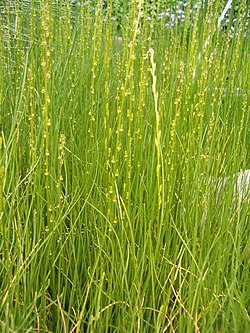| Arrowgrass | |
|---|---|
 | |
| Triglochin palustris | |
 | |
| Triglochin calcitrapa | |
| Scientific classification | |
| Kingdom: | Plantae |
| Clade: | Tracheophytes |
| Clade: | Angiosperms |
| Clade: | Monocots |
| Order: | Alismatales |
| Family: | Juncaginaceae |
| Genus: | Triglochin L. |
| Synonyms [1] | |
| |
Triglochin is a plant genus in the family Juncaginaceae described by Carl Linnaeus in 1753. [3] [4] It includes 25 known species. It is very nearly cosmopolitan in distribution, with species on every continent except Antarctica. North America has four accepted species, two of which can also be found in Europe: Triglochin palustris (marsh arrowgrass) and Triglochin maritima (sea arrowgrass). [5] [6] Australia has many more. [1] [7]
Contents
The most widely used common name for the genus is arrowgrass, [8] although these plants are not really grasses. Many of the common names for species make use of the term "arrowgrass", although there are exceptions: T. procera , for example, is commonly known as water ribbons.
Arrowgrasses are used as food plants by the larvae of some Lepidoptera species including the grey chi moth.